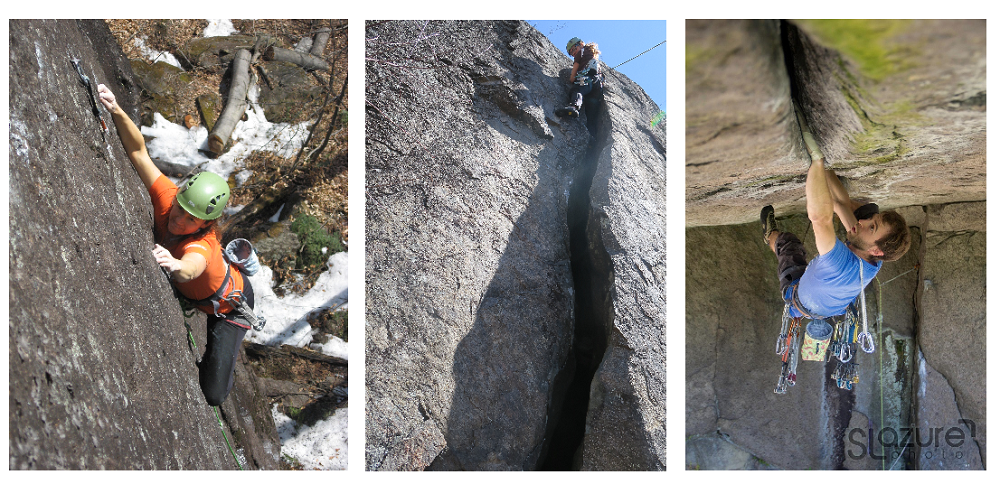Rock climbing

Source:
Photo credits: at left and centre, Pierre Cornellier; at right, Sébastien Lazure; Martine Lavallée collection.
Photographs showing climbers engaged in rock climbing, which was previously known as mountaineering.
THE DIFFERENCE BETWEEN ALPINISM AND ROCK CLIMBING
For the unschooled, it is easy and perhaps logical to think of alpinism and rock climbing as much the same thing. However, it is better to distinguish the two activities from each other.
– Alpinism is an older discipline than rock climbing per se. It involves some degree of trekking to a point at which different types of climbing might be involved (glaciers, rock walls, mixed terrain, etc.), and sometimes requires a bivouac before attaining a summit and afterwards climbing back down by either descending or rappelling. This last technique must be carefully mastered since it is the most risky statistically. Alpinism is practised in mountain country in all seasons, and may last several days before the desired summit is reached and the return journey made. The best-known exploit of this kind is the ascent of Mount Everest..
– Rock climbing was not a sport in itself to begin with, but simply one stage in alpinism where climbing was necessary. Today, rock climbing is not only practised in mountain country, but also on cliffs or a single rock, and as much in the forest as at the seaside or in the desert. Rock climbing also requires the climber to descend or rappel back down.
– Trad climbing is practised on natural routes that are poorly equipped with the exception of a few removable belay points. The climber must position his own additional protection in the cracks, holes or around lunules and trees, as judged necessary.
– Sport climbing is practised on routes that are already equipped with numerous fixed anchor points. The climber only has to place his quickdraws in these anchor points. Sometimes, fixed quickdraws are already installed.
A BRIEF HISTORY
In the 1960s, rock climbing began to assert its autonomy in relation to its older relative, alpinism. Rock climbing was even established in opposition to alpinism, to some extent. For alpinists, rock climbing was only one way among others of reaching a summit. When not on more lengthy expeditions, alpinists practise rock climbing to keep fit.
The appearance of modern free climbing (without relying on devices) is the result of a double concordance between European and North American thinking on the subject. Rock climbing has gone through the stages of first gaining independence, then sociological and media acceptance. For modern climbers, rock climbing is an end in itself whose result is found in the act of climbing. Today, alpinism and rock climbing are quite separate activities.

